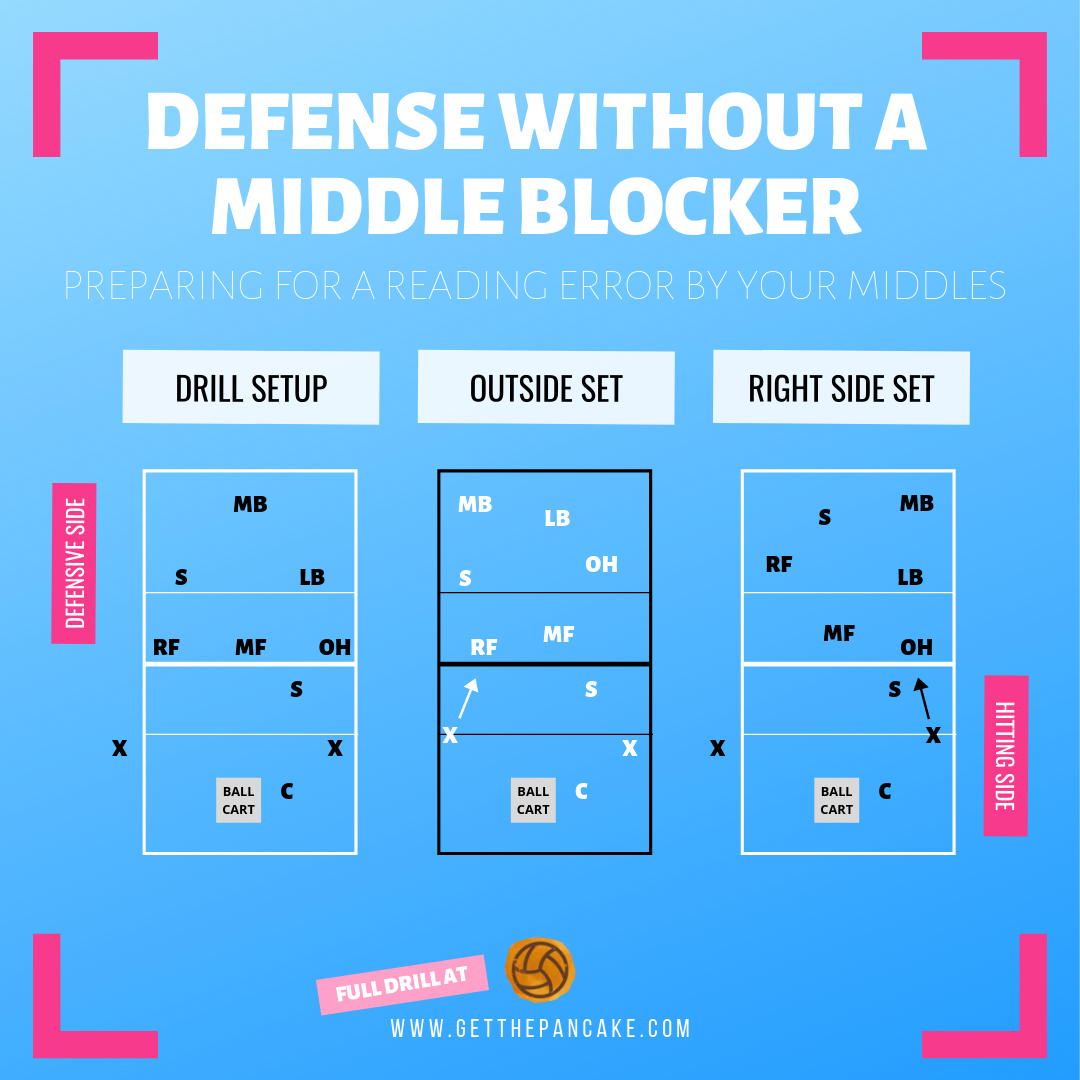Defense Without A Middle Blocker
No matter what age you coach, you’ve probably seen it happen. Maybe it was in the middle of a long rally, or happened on the first attack. It could have been due to a deceptive jump set, or just a misread of your opponents attack.
What am I talking about?
When the middle goes up to block with the setter/middle, and the set goes somewhere else.
In other words… your defense becomes a lot less effective.
Although we train our middles to read the set, anyone with a season under their belt knows that things don’t always go as planned.
The best teams, in my opinion, plan for these circumstances and practice them (much like practicing for an out-of-system play).
In the drill I’m going to share with you today, I’ll show you the adjustments I have my teams make so we’re not left totally defenseless when my middles make the wrong blocking decision.
DRILL SETUP
This drill is a variation of the Hitting Line vs Defense drill I’ve shared before (I LOVE drills that can be reconfigured to meet different goals on different days).
We want to have our lineup start on one side of the net, while our remaining players line up for hitting lines from the outside and right side positions on the second side. I recommend using a setter so they get more reps in. Even if you’ve got a middle on the second side, stick them into the outside or right side hitting lines. There’s probably some point in your serve receive rotation where they hit from this position, so a couple reps will help out.
RUN THE DRILL
To make the drill realistic, we’re going to have the middle blocker on your defensive side go up with the setter (or you can have a middle run quicks on the hitting side, they just won’t get set at first).
The setter will, of course, set to either the outside or right side, leaving your team without a middle blocker.
Depending on the skill level of your team, you can change only one player’s positioning, or you can alter your entire team’s defense. That’s the beauty of coaching, you get to make the decision based on what you believe your team is capable of!
For younger or less experienced teams, I recommend only shifting your pin player (outside or right side) in more towards the middle on the block. This at least takes makes up for some of the block you’re missing without your middle blocker.
With older teams, I prefer to shift everyone on the court to better cover the weaknesses. This defensive positioning is closest to rotational defense, but with some minor changes (the pin player who is back to pass will drop further back, the middle will cover tips if possible after landing from their block, etc.). I’ve illustrated this to better show my preferred positioning.
After your team understands where they’re going, run the drill as follows:
Alternate sets to outside and right side
Have your defensive side play out the point (hit it back to the hitting side)
Once you achieve a goal (i.e., 5 pass-set-hits to the hitting side) or finish a timed run-through of the drill, switch front row and back row to change setters and hitters.
Repeat 2x through so your players get one turn to learn, and another to execute after they understand.
DRILL VARIATION
Once your team is confident in shifting to pass the hit without the middle blocker, add in a middle hitter on the hitting side. On occasion, have the middle hitter actually hit the ball, making the scenario even more game like. This will force your team to become better at reading the opposing team’s hit, and adjusting to the set which your middle hitter misreads.
This also stops them from cheating in the drill, which many teams do when they know one option is eliminated.
Have your setter on the hitting side mix up their sets so it does not always follow the same pattern (i.e., go to outside twice, then right side, then back to outside, then middle). This will keep your defense on their toes and help them in a match when the opponent’s sets are harder to predict.

